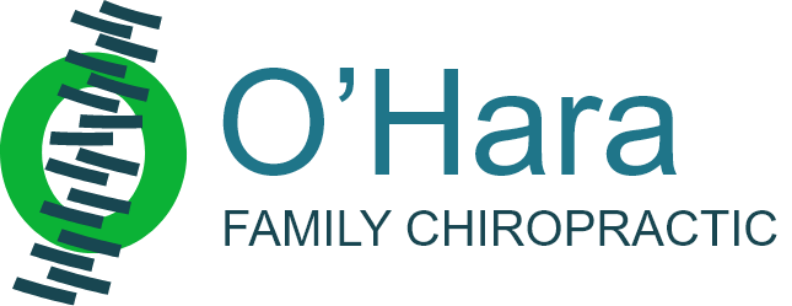Why Muscles Get Sore After Yard Work
Yard work can feel rewarding, but it often leads to muscle soreness. Even activities like raking leaves, mowing the lawn, or pulling weeds involve repetitive motions and awkward postures that place stress on muscles, joints, and the spine.
When muscles are overworked or used in ways they aren’t accustomed to, small microscopic tears occur in the muscle fibers. This is a normal part of muscle adaptation, but it leads to delayed-onset muscle soreness (DOMS)—the stiffness and discomfort that appear 24-48 hours after activity.
Common Reasons Yard Work Causes Muscle Soreness
-
Repetitive Movements
Raking, digging, and bending repeatedly strains the same muscle groups. Over time, fatigue builds, and muscles feel sore or tight. -
Unaccustomed Activity
If you’re typically sedentary during the week, your muscles are not conditioned for prolonged yard work. Sudden exertion causes micro-tears and inflammation. -
Twisting and Bending
Improper body mechanics during lifting, bending, or twisting increases tension on the back, shoulders, and core muscles. -
Muscle Imbalances
Weak core or back muscles place extra stress on other muscles during yard work, leading to soreness in unexpected areas. -
Poor Posture or Ergonomics
Hunching over while weeding or leaning forward while mowing can strain the spine, neck, and shoulders. Proper posture helps distribute the load more evenly across muscles.
Why Some Areas Hurt More
Muscles that are frequently used or under constant tension during yard work are most likely to be sore, including:
-
Lower back muscles: Support bending and lifting
-
Shoulders and upper back: Engage during raking, pruning, or mowing
-
Legs and glutes: Support squatting, lifting, and moving around the yard
-
Arms and forearms: Control tools and repeated motion
Even small muscles, like those in the forearms or core, can become sore if they’re compensating for weaker or fatigued areas.
How Chiropractic Care Can Help
Chiropractic care can accelerate recovery and reduce soreness after yard work. Dr. Kevin O’Hara at O’Hara Family Chiropractic in Arlington Heights focuses on:
-
Spinal alignment: Ensures vertebrae move freely and relieve stress on surrounding muscles
-
Soft tissue therapy: Relaxes tight muscles and reduces inflammation
-
Movement and posture guidance: Teaches safe techniques for lifting, twisting, and bending
-
Targeted exercises: Strengthens supporting muscles to prevent future soreness or injury
Many patients report feeling lighter, more flexible, and less sore after a session, which helps them recover faster and resume yard work comfortably.
Tips to Reduce Muscle Soreness While Yard Work
-
Warm Up: Stretch and move your muscles before starting yard work to improve circulation.
-
Use Proper Mechanics: Bend at your knees instead of your waist when lifting; avoid twisting while pulling or pushing.
-
Take Frequent Breaks: Short, regular breaks reduce fatigue and prevent overuse.
-
Alternate Tasks: Switching between raking, digging, and lifting prevents repetitive strain on the same muscles.
-
Hydrate: Proper hydration helps muscles recover and reduces cramping.
-
Strengthen Core and Back: A strong core supports your spine and prevents muscle overload.
-
Apply Ice if Needed: Ice can help reduce inflammation in sore muscles after yard work.
-
Schedule Chiropractic Checkups: Regular care keeps your spine aligned and muscles balanced.
When to Seek Professional Help
Most post-yard-work soreness is mild and resolves in a few days. However, see a chiropractor or healthcare professional if you experience:
-
Severe or sharp pain that doesn’t improve with rest
-
Pain radiating down the legs or arms
-
Muscle weakness or numbness
-
Joint swelling or instability
Early intervention prevents minor soreness from developing into chronic pain and ensures proper healing of muscles, joints, and the spine.
Recovery After Yard Work
To help your body recover quickly:
-
Gentle stretching: Focus on lower back, hamstrings, shoulders, and glutes
-
Light activity: Walking or mild movement promotes blood flow
-
Soft tissue therapy: Massage or myofascial release helps muscles relax
-
Chiropractic adjustments: Restore spinal alignment and joint mobility
Combining these strategies supports long-term spinal and muscular health while reducing the likelihood of recurring soreness.
Final Thoughts
Muscle soreness after yard work is common, but it doesn’t have to slow you down. Overuse, repetitive motion, and poor posture strain muscles and joints, leading to delayed-onset soreness. Chiropractic care, proper technique, and targeted exercises can help you recover faster, prevent injuries, and make yard work more enjoyable.
At O’Hara Family Chiropractic in Arlington Heights, Dr. Kevin O’Hara helps patients recover from yard work soreness, restore proper spinal alignment, and maintain healthy muscles and joints for all seasonal activities.
Don’t let soreness hold you back—schedule a chiropractic evaluation today to learn how to protect your spine and muscles during yard work and beyond.
